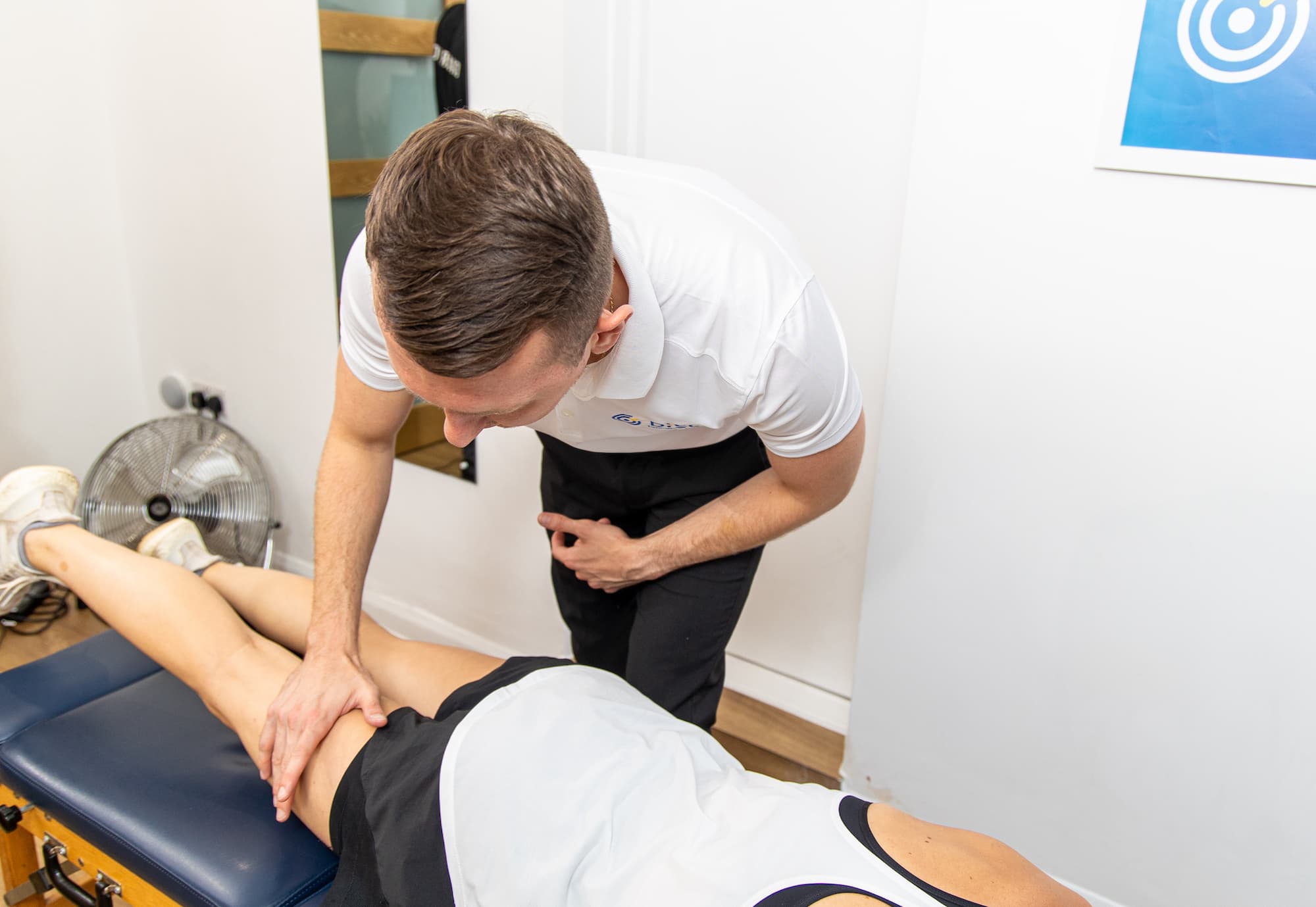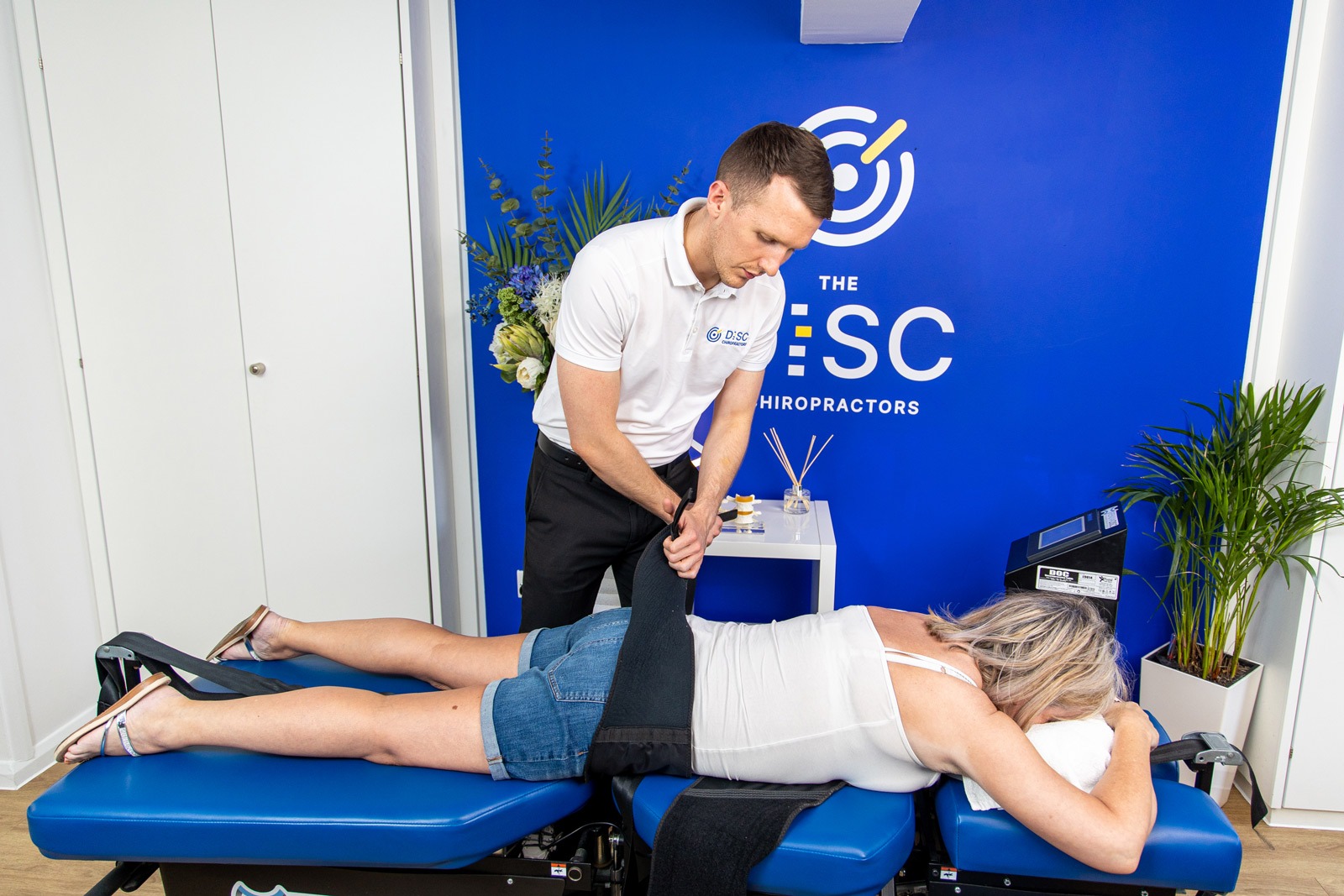Piriformis Syndrome, effective Treatment in Surbiton
Book NowWhat is Piriformis Syndrome?
Piriformis syndrome or piriformis disease is the spasming of the piriformis muscle in the buttock, which subsequently has the potential to irritate the sciatic nerve which runs adjacent, and is a cause of Pseudo-Sciatica.
Well, that’s the textbook answer! Because of its location adjacent to the sciatic nerve, it is often blamed for pain patterns that run from the buttocks and down the leg. A small percentage of people (approximately 13%) may even have a bifurcated (split) muscle through which the sciatic nerve goes, furthering the potential to cause sciatica.
As you might have noticed from my tone, we at DISC aren’t the biggest fans of piriformis syndrome as an actual condition, as for us it involves blaming the messenger rather than trying to identify the cause.

Is Piriformis Syndrome a made-up Condition?
The most likely reason a piriformis muscle is tight is that it has to be overactive to compensate for other muscles that are not firing properly, such as the gluteal or buttock muscles.
Stop blaming the symptom and look for the cause!


What Causes Piriformis Syndrome?
Piriformis syndrome is caused at the end of a string of failures, often starting with a disc injury, and ending in the piriformis muscle spasming in a futile attempt to stabilise the pelvic region.
Often, we need to look through the entire chain of events that has happened before the piriformis muscle inflaming to find the true cause otherwise we are destined to repeat the same complaint over and over again episodically.
The most likely reason a piriformis muscle is tight is that it has to be overly active to compensate for other muscles that are not firing properly, in this case, the gluteal muscles.
This begs the question of why the gluteal muscles are not functioning… underconditioned from a lack of exercise? excessive amounts of sitting? or top of the list… are there degenerative changes in the spine affecting the nerve supply to the area?
Previous injury or simple lack of hydration can severely impact the lower back discs reducing their function and by affect cutting down the power output to the pelvic muscles. As the hip now lacks stability it chronically tightens the piriformis and other hip stabilisers like the TFL to adapt to the loss of function.
Therefore, in our humble opinion, piriformis syndrome is less a diagnosis in its own right and more a symptom of a condition deeper in the system.
HOW TO TEST FOR PIRIFORMIS SYNDROME?
The best way to test for piriformis syndrome is with specialised orthopaedic tests. As previously described, because piriformis syndrome often replicates the symptoms of sciatica it is often misdiagnosed or blamed for sciatic symptoms. Just having pain in the leg and a tight piriformis muscle does not qualify as a direct causality.
Whilst we would expect special nerve tension tests such as a straight leg raise or slump test as being positive for leg pain, we would also expect tests that stretch the piriformis to be positive for creating sciatic symptoms.
Logically, any therapist giving piriformis stretches for piriformis syndrome is misguided or more likely has misrepresented the diagnosis. As stretching the muscle will tighten its grip on the nerve causing more pain in the leg, a clear contraindication.

What does Piriformis Pain feel like?
Piriformis pain is the great imitator, often being characterised by the same symptoms as Sciatica.
Pain, numbness and muscle dysfunction would be usual, with pain seeming to radiate from the buttock rather than the spine.


HOW TO FIX PIRIFORMIS SYNDROME?
Whilst an elbow in the buttocks is a gloriously painful way to release the tension currently held in the piriformis muscle, it is going to do little to resolve the condition long-term.
The first step in treating any condition is to find the underlying cause, often the pain experienced by a patient is the last “domino” to fall in a cascade of reactions.
A thorough examination at our DISC Clinic in Surbiton will help not only identify exactly what is generating the pain but also aim to understand its root cause.
In this case, it is likely dysfunction in the lumbar discs, creating muscle weakness in the pelvis, leaving the piriformis as the last line of stability holding the whole region together.
The first steps towards gaining pain relief often come by mobilising the soft tissues and joints such as the lumbar facet joint and sacroiliac joints; At DISC Surbiton, this is achieved by using a combination of manual mobilising chiropractic techniques with our unique blend of Instrument-Assisted Adjusting tools.
Spinal Decompression Therapy is one of the powerhouse treatments available at The DISC Chiropractors, its traction technology provides a unique ability to heal disc injuries and to un-trap the nerves that are often at fault for issues further down the chain for example in the arms and legs.
When conditions like piriformis disease struggle to heal, Laser Therapy is an extremely safe and effective method of advancing healing rates. Its warm photon light energy stimulates mitochondrial activity to enhance recovery in both the piriformis muscle and the adjacent sciatic nerve.
